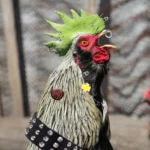Birds: A Branch of the Animal Kingdom
Birds are definitively animals, belonging to the Kingdom Animalia, Phylum Chordata, and Class Aves. Their unique characteristics, such as feathers, beaks, and highly efficient respiratory systems, distinguish them within the vast animal world. These adaptations are products of a long evolutionary journey, tracing their ancestry back to theropod dinosaurs, the group that included Tyrannosaurus rex. Fossil discoveries, like Archaeopteryx, provide tangible links between reptiles and birds, showcasing a mosaic of reptilian and avian traits. This evolutionary history underscores birds’ significance in the grand narrative of life on Earth. They play vital ecological roles as pollinators, seed dispersers, and integral components of the food chain. Learn more about endangered species by visiting this helpful resource.
Avian Taxonomy: Classifying Feathered Diversity
Scientists categorize the astounding diversity of over 10,000 bird species using a hierarchical system. This system mirrors evolutionary relationships starting with the broad Kingdom (Animalia) and progressively narrowing to Phylum (Chordata), Class (Aves), Order, Family, Genus, and ultimately, the specific species. Traditionally, classification relied heavily on physical characteristics—beaks, wings, and feather patterns—but how reliable are these observations? Modern methods, such as DNA sequencing, offer deeper insights into evolutionary connections, occasionally revealing surprising relationships and refining our existing knowledge of avian biodiversity. Taxonomic keys, utilizing a series of paired descriptions, aid in identifying bird species by systematically eliminating possibilities. This method provides a practical way to navigate the complexities of avian diversity, enriching our understanding of the natural world.
However, taxonomic challenges persist. Questions remain about the relationships between certain lineages, particularly those of flightless birds. Active research, integrating genetic data with morphological observations, strives to refine these classifications, reflecting the dynamic nature of scientific exploration.
The Mechanics of Avian Flight: An Evolutionary Marvel
A bird’s ability to fly is a triumph of evolutionary engineering. Two primary theories attempt to explain flight’s origin: the “trees-down” hypothesis (gliding from trees) and the “ground-up” hypothesis (running and leaping). While debate continues, mounting evidence supports a ground-based origin. Birds evolved from theropod dinosaurs—two-legged predators whose adaptations progressively facilitated powered flight. Their lightweight, hollow bones and powerful flight muscles, especially the pectoralis and supracoracoideus, generate the necessary lift and thrust. This intricate musculoskeletal system demonstrates the profound influence of natural selection.
Flight, however, comes at an energetic cost. Body size plays a critical role, imposing limits on the maximum size of flying birds. Accurately measuring flight performance presents significant challenges. While aerodynamic models offer valuable insights, real-world validation remains essential. The Strouhal number, a dimensionless value relating wingbeat frequency, amplitude, and speed, offers a comparative framework for analyzing different flight styles. Ongoing research continues to delve into the intricacies of this remarkable adaptation, enriching our appreciation for avian biomechanics.
Bird Migration: Navigational Prowess and Conservation Concerns
Bird migration showcases nature’s remarkable navigational capabilities. How do birds navigate across vast distances with such precision? They employ an array of tools, functioning like a multi-sensory GPS: a geomagnetic sense, celestial navigation using stars and the sun, olfactory cues (sense of smell), and landmark recognition. Astonishingly, they can integrate these various cues, adapting their strategies based on prevailing conditions. This adaptability is a testament to their cognitive flexibility. However, their incredible journeys are fraught with peril. Weather patterns, habitat loss, climate change, and light pollution pose significant threats to migratory birds. Technological advances, including miniature GPS trackers and radar systems, have revolutionized our ability to monitor bird migration, providing unprecedented data on routes, stopover sites, and the overall dynamics of these impressive feats. This information is invaluable for effective conservation strategies. Imagine tracking a tiny songbird’s flight across continents—technology now makes this possible, offering hope for protecting these vulnerable creatures.
The study of bird migration is a vibrant field, continually revealing new insights into the challenges these animals face. This knowledge is crucial for developing effective conservation measures to ensure the survival of migratory bird species in a rapidly changing world. Protecting stopover habitats, mitigating the effects of light pollution, and addressing the broader impacts of climate change are essential steps in safeguarding these remarkable journeys and preserving avian biodiversity for future generations.
- Mastering Leader in Spanish: The Complete Guide - April 19, 2025
- Uncovering Surprising Parallels: England Size Compared to US States - April 19, 2025
- Old Mexico Map: Border Shifts 1821-1857 - April 19, 2025
















